Off the Beaten Path: Hiking the Trans Canada Trail with Passport Places
Canada is home to some of the best hiking in the world, with rugged coastlines, soaring mountains, breathtaking vistas, winding river valleys, and more. Since before the arrival of Europeans, Indigenous people in what is now Canada used trails and pathways for trade, hunting, fishing and more – this vast network of Indigenous trails still exists today, though it has been heavily disrupted by colonialism and many of those paths now lie beneath paved roads. For example, some roads in Toronto follow the path of the Carrying Place Trail, a network of trade routes that led to the Upper Great Lakes. In fact, the Carrying Place Trail’s connection to the northwest contributed to the decision to found York, later Toronto, on that spot. Plus, the Chilkoot Trail which was a major route for prospectors in the Gold Rush originated as a trade route for Indigenous people to access resources available in the interior. When exploring these trails, remember the long history of Indigenous people who walked the same paths you do and familiarize yourself with the traditional territories these trails take you through.
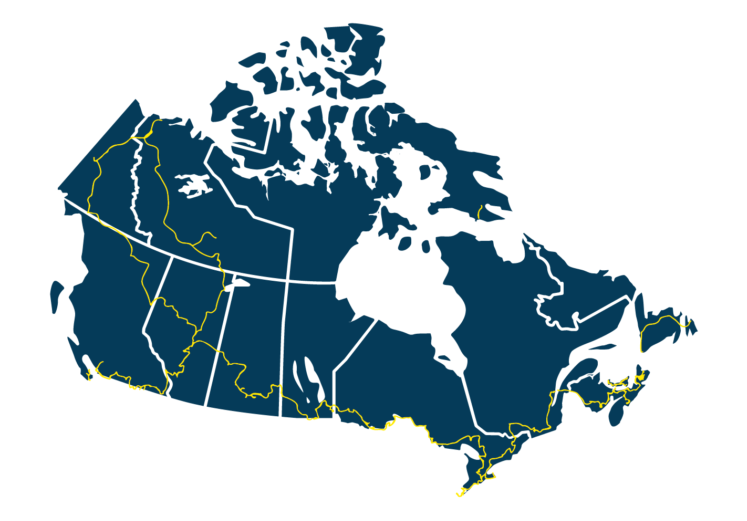
Map of the Trans Canada Trail with routes highlighted in yellow. Courtesy of Trans Canada Trail.
The Trans Canada Trail, established in 1992, is a sprawling system of greenways, waterways, and roadways that cross the country and stretches from coast-to-coast-coast. The trail’s whopping 24,134 km length makes it the longest recreational, multi-use trail network in the world! Whether you’re interested in hiking, canoeing, horseback riding, snowshoeing, snowmobiling, or bike riding, you can find a section of the trail that suits your needs. And while you’re hiking, why not venture a little off the beaten path and explore some of Canada’s historic sites with these Passport Places, conveniently located off the Trans Canada Trail.
Colony of Avalon, Ferryland, NL
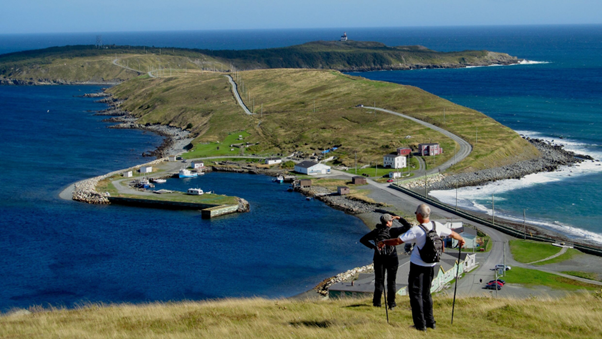
A pair of hikers enjoy the view from Colony of Avalon’s archaeological site. Courtesy of Colony of Avalon.
Beginning our hike across the country in Newfoundland and Labrador, about 75 km south of “Mile Zero” in St. John’s, the East Coast Trail portion of the Trans Canada Trail will take you right through the Colony of Avalon and the traditional territory of the Beothuk and Mi’kmaq’ki. Every summer, the active archaeological site uncovers thousands of artifacts to learn more about Lord Baltomore’s 1621 colony. The site even invites you to try your own hand at digging up the past through special programs available during the summer months. Talk about getting hands-on experience!
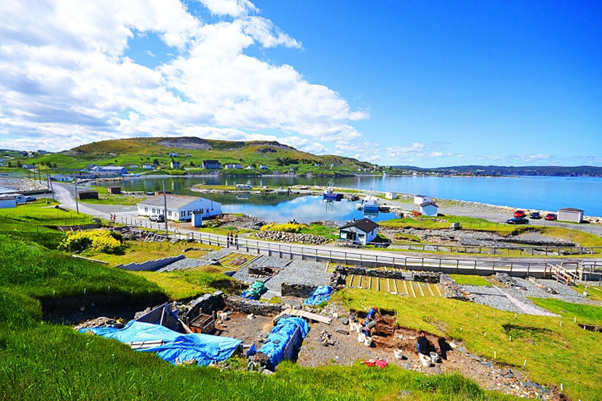
Archaeologists at work. Courtesy of Colony of Avalon.
Explore one of the best-preserved early English colonial sites in North America and view the conservation lab, archaeology site, 17th century kitchen and gardens and more. Guided tours are also available.
Visit their website to learn more.
Basin Head Fisheries, Souris, PEI
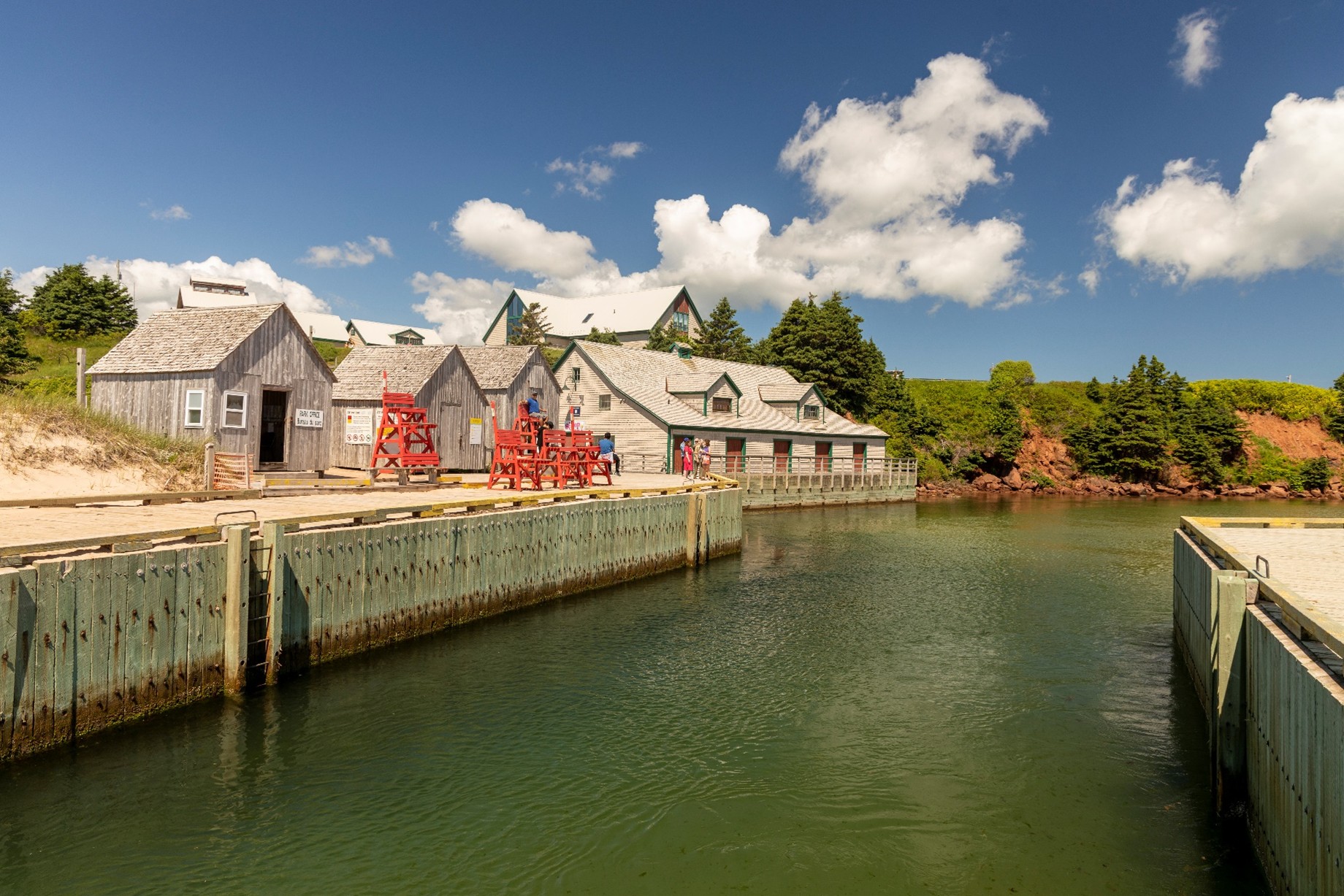
Courtesy of PEI Museum and Heritage Foundation
Following the Confederation Trail in PEI will take you right through to Basin Head Fisheries Museum and the adjoining Basin Head Provincial Park in the traditional territory of the Wabanaki and the Mik’maq’ki.
The museum is located atop a bluff that overlooks the Northumberland Strait, offering some beautiful views of the “Singing Sands” beach. What a perfect opportunity to take in some local history and learn about PEI’s fisheries and hit the beach afterward! Take in the view and then head inside to explore the museum’s cultural and material objects and the story of PEI’s inshore fishery and cannery. While you’re there, make sure to take the new Marine Protected Area Tours where you will get to experience the singing sands beneath your feet, have a tasty treat (ice cream) that contains carrageenan from Irish Moss that is similar to the Irish Moss that grows in the Basin Head lagoon, and to take part in the conservation effort by pulling a Green Crab trap and documenting the contents!
Visit their website to learn more.
Fredericton Region Museum, Fredericton, NB
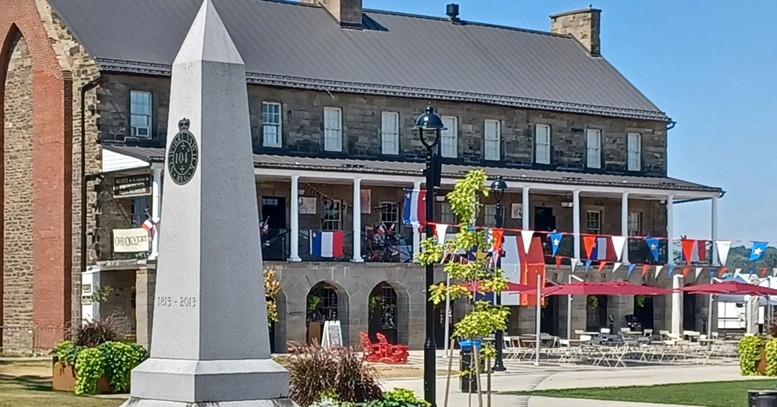
Courtesy of Fredericton Region Museum.
Moving into New Brunswick, the Valley and South Riverfront Trail in Fredericton passes by the Fredericton Region Museum on the traditional territory of the Wabanaki and the Wolastoqiyik. The St. John River, right behind the museum, also known as the “River of the Good Wave” was used by First Nations for travel, hunting, and fishing, and ancient portage routes along the river would have been used for hundreds of years. In fact, a project is currently underway to restore six ancient portage trails in Central New Brunswick.
Acquaint yourself with the province’s capital and its history in this museum housed in the former Officer’s Quarters, which was rebuilt in 1853. This museum is the perfect place to learn about Fredericton and its role as a meeting place for Indigenous peoples, Loyalists, Acadians, and other European settlers. Plus, say hello to the 42 lb. (yes, we said 42 lb!) Coleman frog!
Visit their website to learn more.
Old Carleton County Courthouse, Woodstock, NB
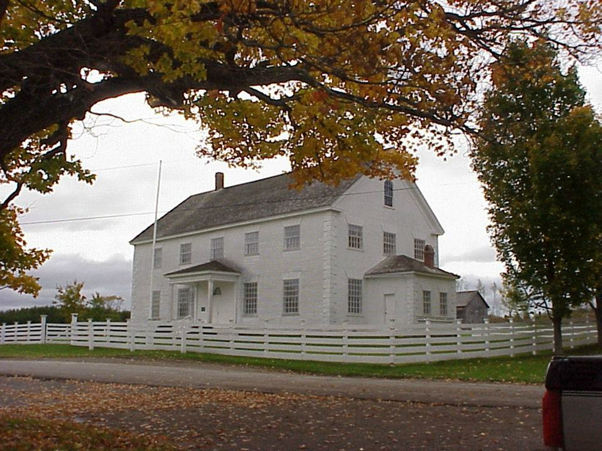
Courtesy of Carleton County Historical Society.
The Old Carleton County Courthouse is our next stop on this cross-country journey. The Wollastoq Valley Trail connects you to this historic courthouse on the traditional territory of the Mik’maq’ki, Wabanaki and Wollastoqiyik. Originally built in 1833 and expanded in 1866, this was the first courthouse in Carleton County. The monumental effort by the Carleton County Historical Society to restore the building gained the attention of HRH Princess Anne, and in 1986 she visited the site.
Visitors are welcome to explore the restored courthouse. Walk through the Judge’s Chambers, the Main Courtroom, the Clerk’s Room, and the Prisoner’s Room while hearing about the trials that took place here.
Visit their website to learn more.
Fieldcote Museum, Ancaster, ON
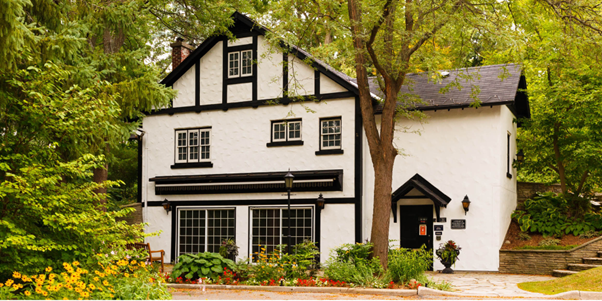
Courtesy of Hamilton Civic Museums.
The Hamilton to Brantford Rail Trail, 32 kilometres of trail built atop a section of the old Toronto, Hamilton and Buffalo railway, will take you past many of the region’s historic sites, including Fieldcote Museum and Gardens. The Tudor-style home overlooking Ancaster’s main street was built by Tom and Doris Farmer in 1948 on the traditional territory of the Haudenosaunee, Annishanabe, Attiwonderok and Mississaugas. Tom and Doris knew that Ancaster was in need of a space that would be dedicated to preserving Ancaster’s heritage, and after Doris passed in 1983 the property was transformed into the Fieldcote Museum and Gardens.
This cultural heritage centre focuses on preserving local history and promoting the fine arts. Plus, its award-winning gardens and nature trails celebrate the natural environment the museum is situated in. For even more nature, visitors can explore more trails set behind the property in the beautiful Niagara Escarpment and view some of Hamilton’s more than 100 waterfalls – Canterbury Falls, Sister of Mary Falls and Mills Falls. After all, Hamilton isn’t considered the waterfall capital of Canada for nothing!
Many trails and roads in the Niagara Escarpment can be traced back to Indigenous trails – even Lakeshore Road was once a heavily trafficked trail. The Iroquois Trail and Mohawk Trail both connected present-day Ancaster with places like present-day Detroit, St. Davids and Queenston. These historic trails are commemorated by the Historical Marker Database with a plaque in Hamilton.
Learn more about the Fieldcote Museum and check for exciting special events like music concerts and garden tours at their website:
Visit their website to learn more.
Dryden Museum, Dryden, ON
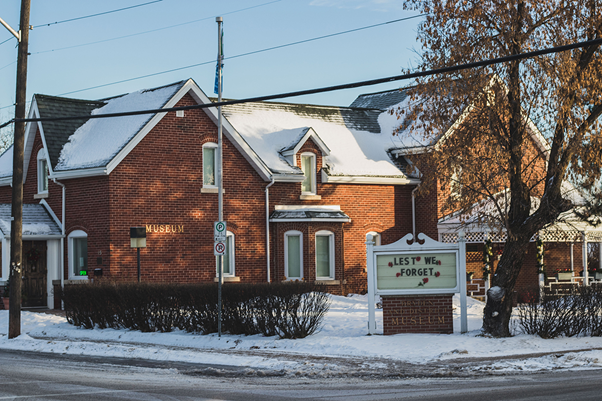
Courtesy of City of Dryden.
If you’re looking to explore a canoe portion of the Trans Canada Trail, then the Migzi Trail Path of the Paddle might be the one for you. The name for the trail comes from the Ojibway word for eagle – if you’re lucky you might just see one! This paddle path will take you to Dryden, ON on the traditional territory of the Annishanabe and the Michif Piyii. Here, you can check out the Dryden Museum and learn more about the region’s history.
Explore Dryden’s history through permanent and temporary exhibits including First Nations art and artifacts, a 1900s pioneer kitchen, and a general store. Plus, community exhibits bring the residents of Dryden together to celebrate their community and home.
Visit their website to learn more.
Nelson Museum, Archives and Gallery, Nelson, BC
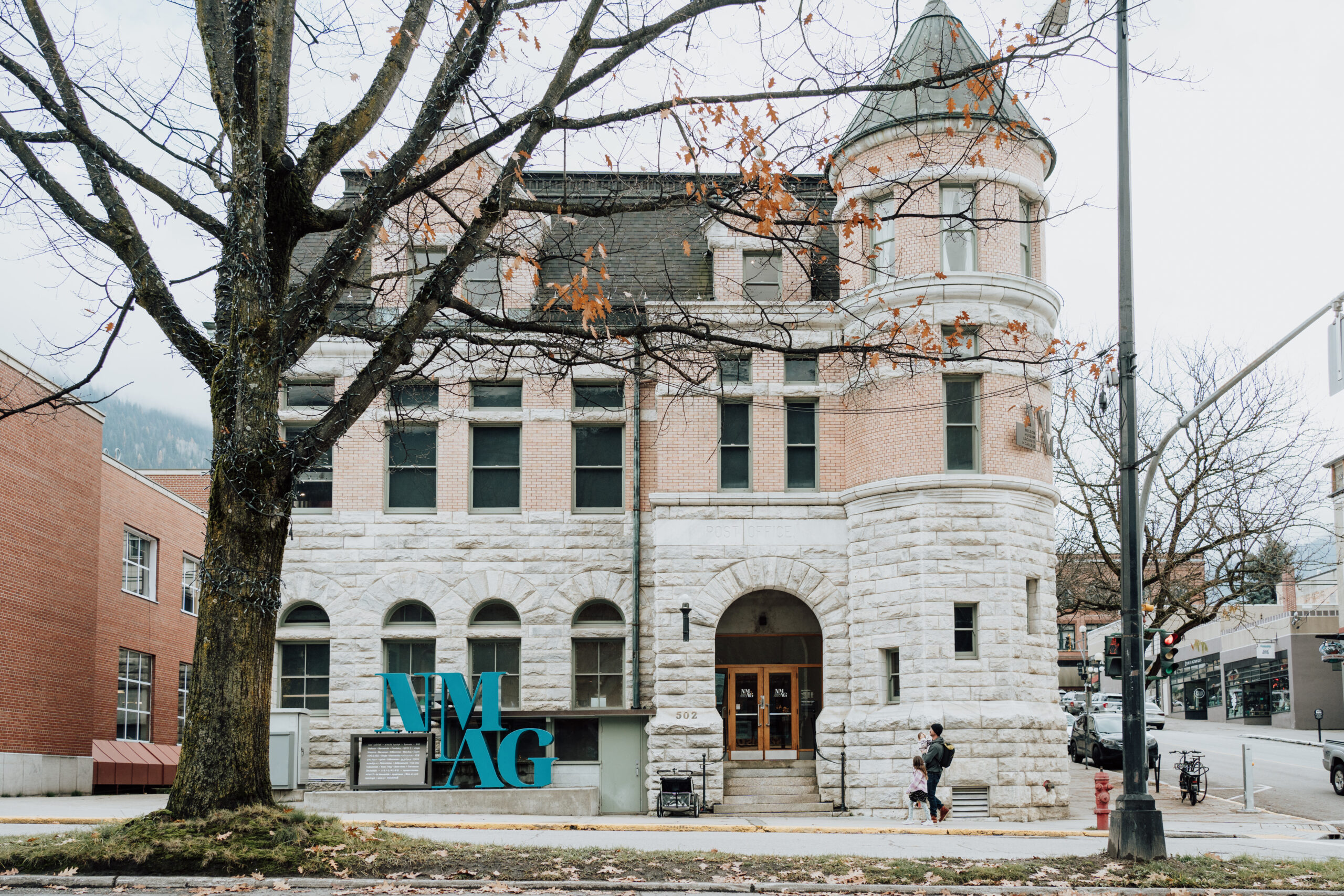
Courtesy of Nelson Museum, Archives and Gallery.
Following the Great Northern Rail Trail will take you to Nelson, BC where you can explore the Nelson Museum, Archives and Gallery. Situated on the traditional territory of the Sinixt and the Yaqan Nukiy (Ktunaxa) peoples, and shared with the Metis community, the museum is dedicated to promoting knowledge, history, and understanding of art and culture. Exhibits range from a variety of artistic representations to local history, and include a Cold War bunker, Jamie Black’s REDress project, the Nelson Sports collection, and more.
Visit their website to learn more.
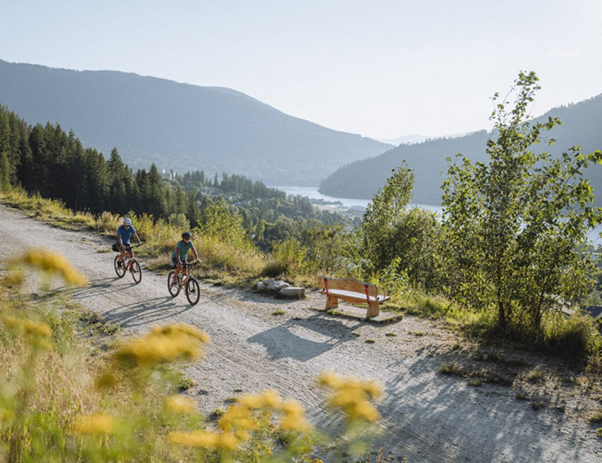
Great Northern Rail Line/Salmo-Troup Trail; Field & Forest photo; Courtesy of KootenayRockies.com
The above historic sites are part of the Trust’s Passport Places program, a National Trust membership benefit that provides free access to over 100 historic places in Canada, as well as 1000+ National Trust places abroad. Become a member today!

